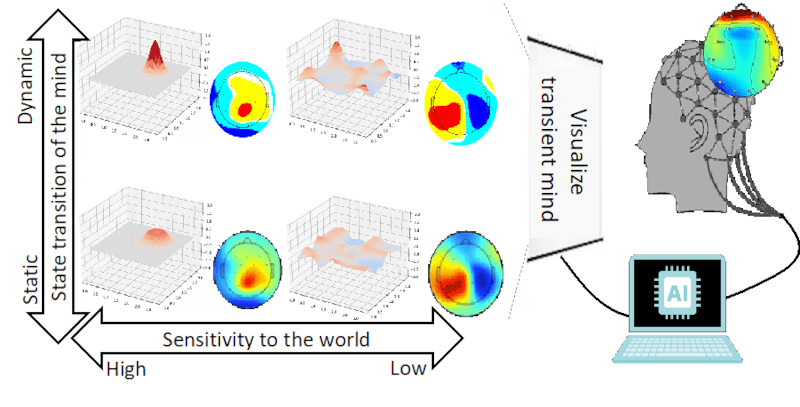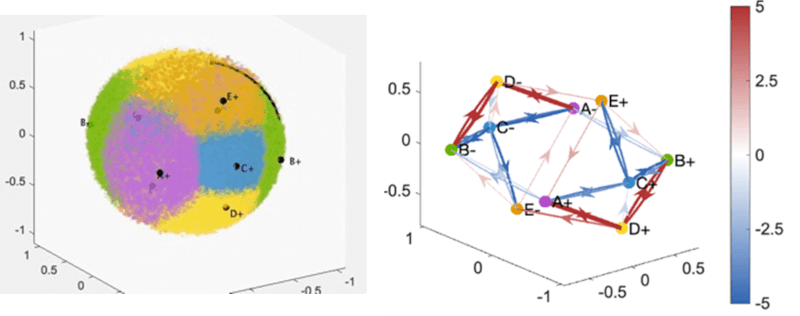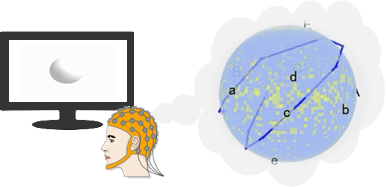Progress Report
Integration of Asian humanities and brain informatics to enhance peace and compassion of the mind[2] Neurofeedback
Progress until FY2024
1. Outline of the project
In this project, we are developing technology aimed at creating a new society where machines coexist with humans. To achieve this goal, we have developed visualization devices capable of sufficiently capturing the transition of mental states. Furthermore, by utilizing this neurofeedback system, we aim participants to acquire a balance of dynamism and stability in brain networks, unaffected by external influences.

2. Outcome so far
“Visualization of brain state transitions”
EEG microstates are an EEG analysis technique that has recently regained attention. By first extracting common EEG templates that capture the spatiotemporally continuous dynamics, brain state transitions can be represented as transitions between these templates. To date, we have coarse-grained these into ten states (A, B, C, D, and E each with positive and negative polarities) to reflect polarity in our analyses (Figure 2, left). This state transition model between ABCDE± enabled the differentiation between young and elderly individuals (Figure 2, right).

“Feedback Technology Development”
By predefining brain states—much like EEG microstates—we make real-time feedback learning possible. Using the real-time feedback system we have developed, we conducted training to reinforce specific rotational components and successfully identified which transition directions are easy to learn and which are not (Figure 3).

“Machine Learning of Brain State Transitions”
Using a Wilson-cowan-based generative model that simulates brain activities, we examined similarity between generated EEG and real EEG. An average of spatial correlation coefficients was 0.50 when using 4 templates and was 0.45 when using 5 templates. Thus, the templates were reasonably similar to each other.

3. Future plans
We have implemented a system that detects transitions among the ten polarity-labeled states and have validated its effectiveness in feedback training. We achieved a substantial improvement in dynamic representation—both in spatial pattern resolution and temporal resolution—and confirmed enhanced learning effects when using this system. We also achieved reasonable similarity between real and generated EEG using a generative model, with potential for contributing to the development of future neurofeedback training. Going forward, it will be necessary to determine which transitions produce positive outcomes and how much training is required to strengthen them. By combining these findings, we aim to implement neurofeedback protocols that foster mental well-going and, ultimately, generate translational benefits for society.